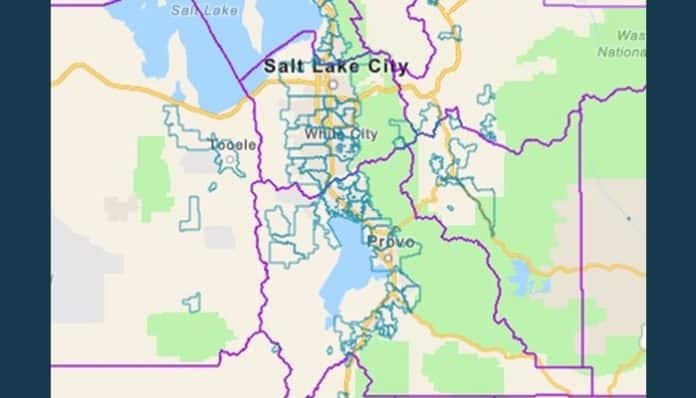SALT LAKE CITY, Utah, July 14, 2021 (Gephardt Daily) — The Utah Independent Redistricting Commission on Wednesday launched its new website to allow Utahns to participate first-hand in the redistricting process.
“Prior to Utah Proposition 4 being passed in 2018 and compromise legislation passed in 2020, Utah’s citizens relied solely on their state elected officials to create political boundaries,” said a news release.
“The increasing desire of citizens to have more say in Utah’s redistricting process resulted in the creation of the seven-member, bipartisan UIRC that acts independently from the Utah State Legislature, whose mission is to gather input Utah citizens, and use that information to develop new, proposed political boundary maps for the state of Utah.”
By visiting UIRC’s website, Utahns will be able to explore the 2020 census data once it’s available sometime in mid-August, submit formal comments and ideas on the suggested draft maps, and even create their own maps, the news release said.
Users may immediately create maps of their communities of interest and, once the final census data is available, create detailed political boundary maps using cutting-edge mapping software accessible through the website.
“Redistricting impacts everything from congressional districts and school boards to community growth,” said Rex Facer, UIRC chair. “We want to hear from all Utahns and what they think are their communities of interest that should be recognized throughout the redistricting process, as they know their own communities best.”
After the most recent census data is released August, the UIRC will begin to create proposed boundaries that will make up Utah’s four congressional districts, state senate, state house and state school board districts.
The maps developed by the UIRC will then be submitted to the Utah State Legislature on Nov. 1 for consideration in conjunction with redistricting maps the legislature is developing through its own process. The Legislature will then finalize new political boundary maps which will be in place for the next decade.
“As Utah changes demographically, redistricting resets a balance to makes sure that each political boundary is of equal populations and representation, so that every voice has a chance to be heard,” Facer added. “We encourage everyone to engage with the Independent commission in the redistricting process, as this will heavily influence Utah elections for years to come.”
For more information, click here.



